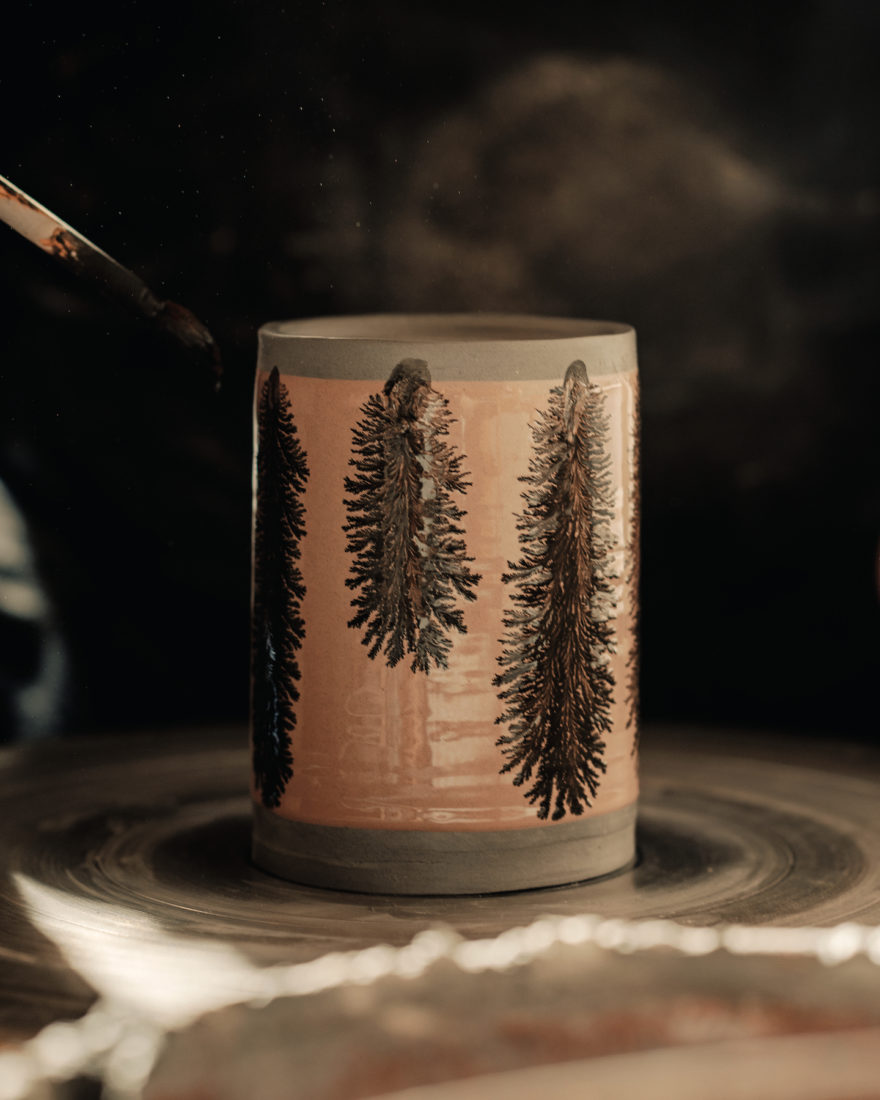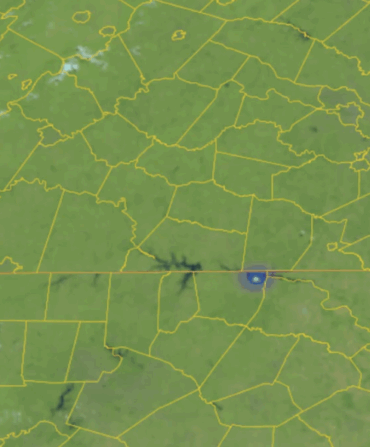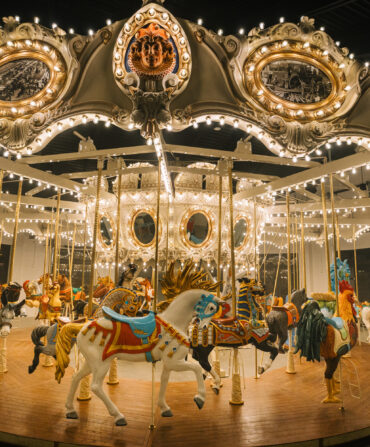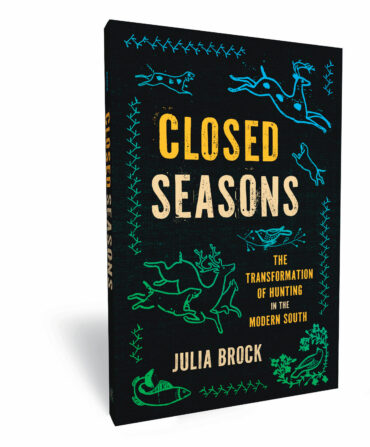When Joseph Jostes drops a bit of liquid onto a clay cup and a seaweed shape fans out, blooming black across the light orange surface, he’s not only decorating a vessel, he’s also keeping alive an almost-extinct tradition of patterned pottery called Mocha ware.
From their SJ Pottery studio and home, just off the main drag of little Salesville, Arkansas, Jostes and his wife, Susan Skinner, sell and mail out tea beakers striped in yellow and blue, and mugs bathed in a persimmon hue. “Looking around our dark log cabin house,” Jostes says, “I understand why everybody wanted this brightly colored stuff.” Mocha ware gained popularity in the eighteenth century but has resurged of late thanks to fans such as Martha Stewart and Tory Burch and artisans such as Jostes, whose patrons include Keith Smythe Meacham, a Southern tastemaker who recently commissioned a gorgeous line of bowls in yellow, green, and cream for Reed Smythe & Company, which she founded with the late Garden & Gun contributing editor Julia Reed.
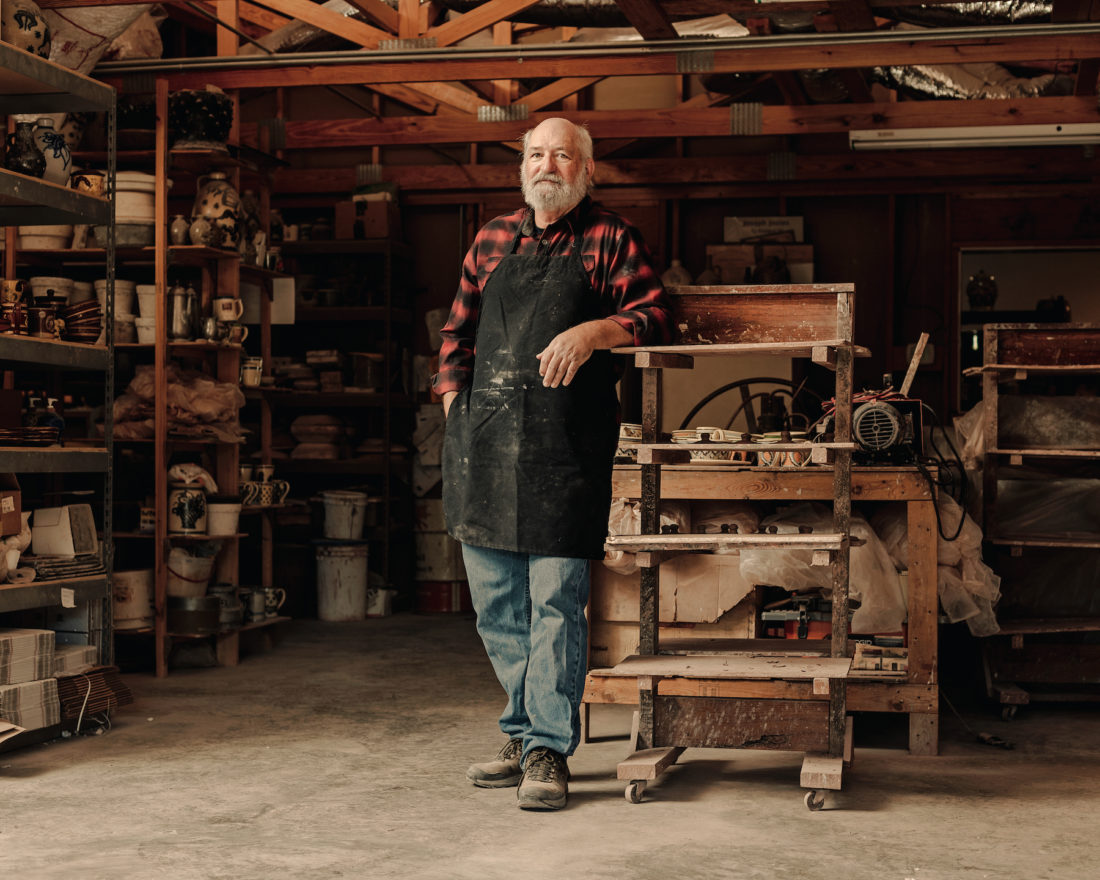
Mocha ware’s origin story involves artisans, a mistake, and perhaps just a bit of mythology. In Georgian-era London, ceramists churned out dishes and decorated them in floral designs for local customers, but they searched for something simple to produce for a homesick export market—the American colonies. While finishing a cup, so the legend goes, a workaday potter dropped something acidic on it to marvelous effect, says Jonathan Rickard, a prolific collector and the author of Mocha and Related Dipped Wares, 1770–1939. “Potters chewed tobacco and spit,” Rickard says, “so it’s conceivable a wad of chewing tobacco missed its target and hit a piece of pottery in production and they liked the result.” The stemming seaweed-like form looked quite like a jeweler’s stone of the time, a moss agate imported through Yemen’s port of Mocha, hence the style’s name. Eventually, the term came to encompass a few more colorful ceramic decorating patterns, dubbed marble, stripe, and earthworm, also known as cable.
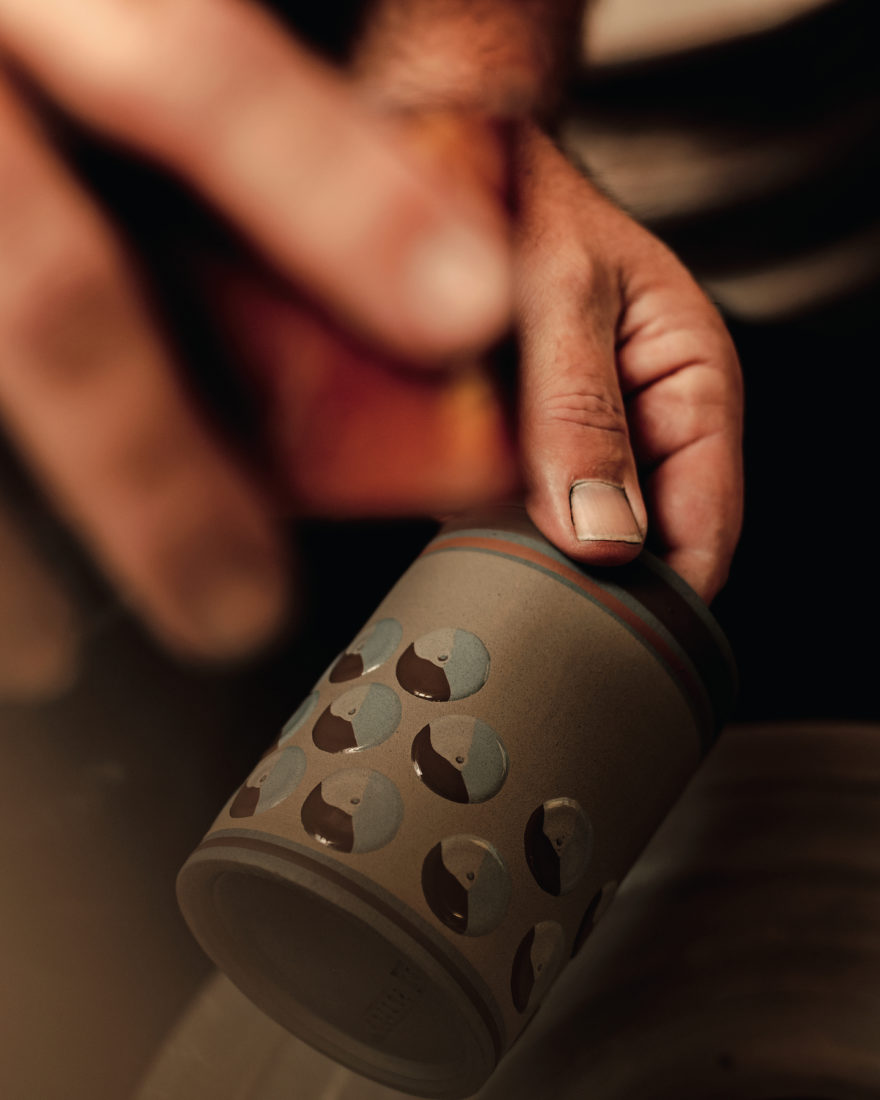

Crates of the dishes arrived in the ports of Boston, New York, Philadelphia, Charleston, and Savannah, then trotted out across the country and became common, everyday tableware—albeit ones dipped and decorated in beauty. When something chipped or broke, often the whole piece got tossed, and today, bits of Mocha ware pop up on construction sites, on beaches, and at historic locales including Colonial Williamsburg. Intact pieces are rare and surprisingly pricey; an eBay seller recently listed a Mocha ware beer tankard, most likely from a Southern pub, for nearly $5,000.
Jostes first set eyes on Mocha in the early 1990s at an antique show in Round Top, Texas. He worked mostly in red clay at that point, but the creamy white base and colorful decorations of Mocha swirled in his mind. He tracked down Rickard’s research and later the acclaimed designs of a self-taught artisan named Don Carpentier, who re-created bowls and pitchers inspired by broken pottery he found on his property in upstate New York until his death in 2014.


Jostes studied Carpentier’s work and experimented with his own collection for years. “Sue said the epitaph on my tombstone should be ‘Huh, I thought that would work,’” he says with a chuckle. Over time, he developed his own mixtures of minerals, clays, and acids that he applies to produce traditional patterns, honing his technique in the early 2000s. “During the recession around 2007, Mocha ware started catching on again in the antique market, but it’s only continuing to grow lately,” he says. “I think people are discovering that the eighteenth century wasn’t all dull colors and browns.” He throws some of the forms on a wheel but often uses the delightfully named jigger jolly machine, a mold of sorts that generates elegant bowls to Jostes’s specifications.


“Making this challenges and brings together all the skills I have,” he says. “There’s a bit of fussing when it comes to decorating—I love making the simple stripes, or the casual earthworm patterns.” Or that original seaweed design that historians call “dendritic.” Once pieces dry to a leather-hard state, Jostes dips and decorates them, and then fires them in a kiln. He applies a clear glaze and fires them a second time until the bowls and cups and mugs emerge looking like the great-great-grandchildren of early Mocha ware.
The graceful pieces Jostes sells are affordable (as their predecessors were at one time), practical for everyday use (they’re dishwasher safe), and display-worthy gorgeous.
“He’s getting it right,” Rickard says of Jostes’s work. “A lot of people have tried to do it without understanding what they’re doing, and I wouldn’t have any of those things in my house—but now I do have a small and growing collection from the little pottery in Arkansas.”


